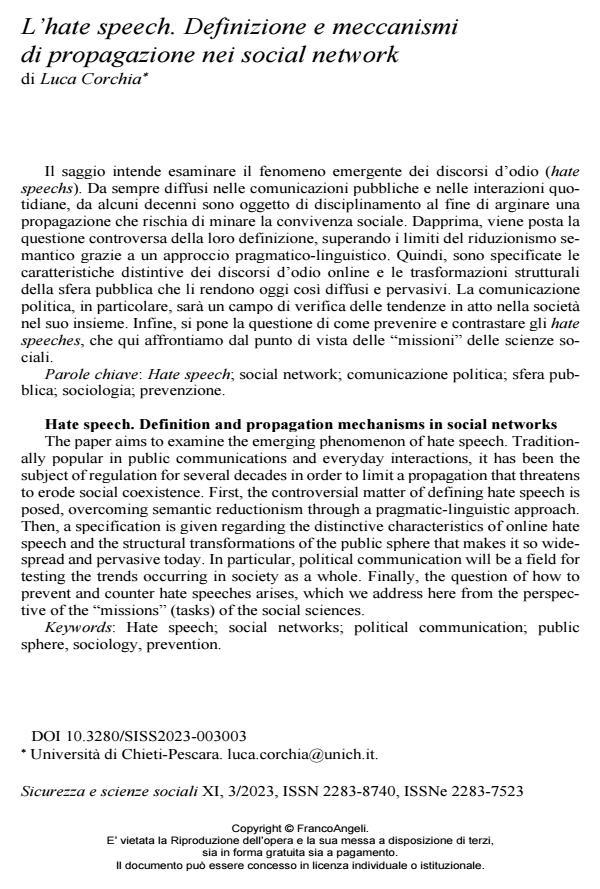Hate speech. Definition and propagation mechanisms in social networks
Journal title SICUREZZA E SCIENZE SOCIALI
Author/s Luca Corchia
Publishing Year 2024 Issue 2023/3
Language Italian Pages 14 P. 28-41 File size 204 KB
DOI 10.3280/SISS2023-003003
DOI is like a bar code for intellectual property: to have more infomation
click here
Below, you can see the article first page
If you want to buy this article in PDF format, you can do it, following the instructions to buy download credits

FrancoAngeli is member of Publishers International Linking Association, Inc (PILA), a not-for-profit association which run the CrossRef service enabling links to and from online scholarly content.
The paper aims to examine the emerging phenomenon of hate speech. Traditionally popular in public communications and everyday interactions, it has been the subject of regulation for several decades in order to limit a propagation that threatens to erode social coexistence. First, the controversial matter of defining hate speech is posed, overcoming semantic reductionism through a pragmatic-linguistic approach. Then, a specification is given regarding the distinctive characteristics of online hate speech and the structural transformations of the public sphere that makes it so widespread and pervasive today. In particular, political communication will be a field for testing the trends occurring in society as a whole. Finally, the question of how to prevent and counter hate speeches arises, which we address here from the perspective of the “missions” (tasks) of the social sciences.
Keywords: Hate speech; social networks; political communication; public sphere, sociology, prevention.
Luca Corchia, L’hate speech. Definizione e meccanismi di propagazione nei social network in "SICUREZZA E SCIENZE SOCIALI" 3/2023, pp 28-41, DOI: 10.3280/SISS2023-003003